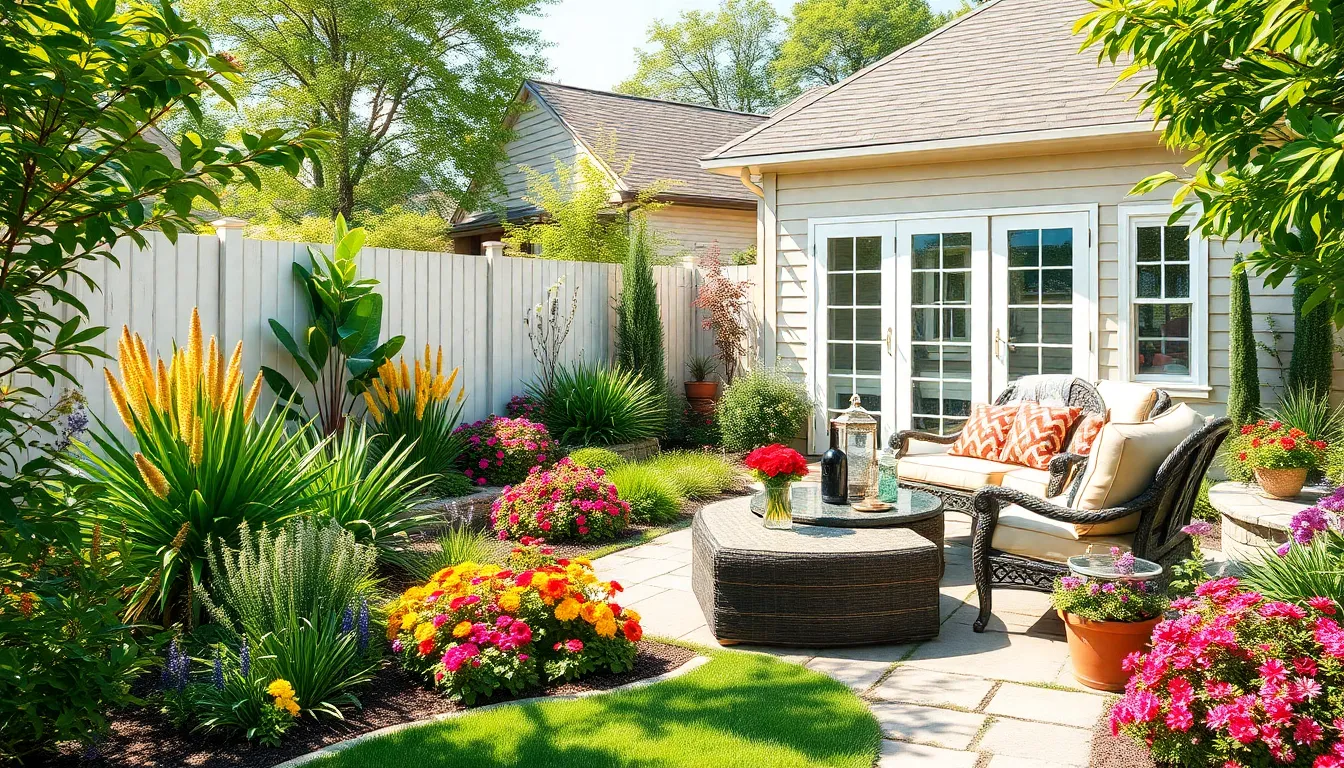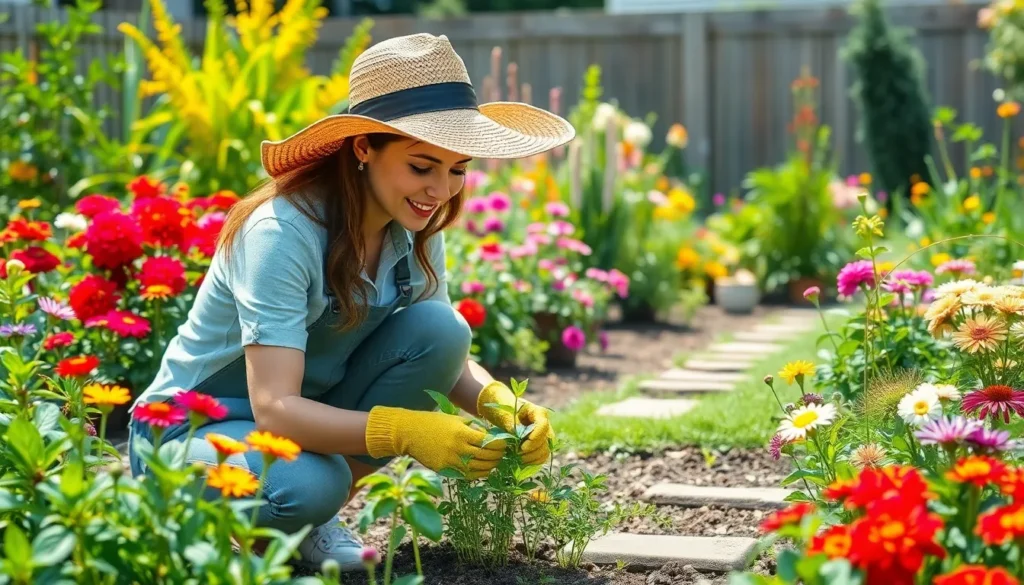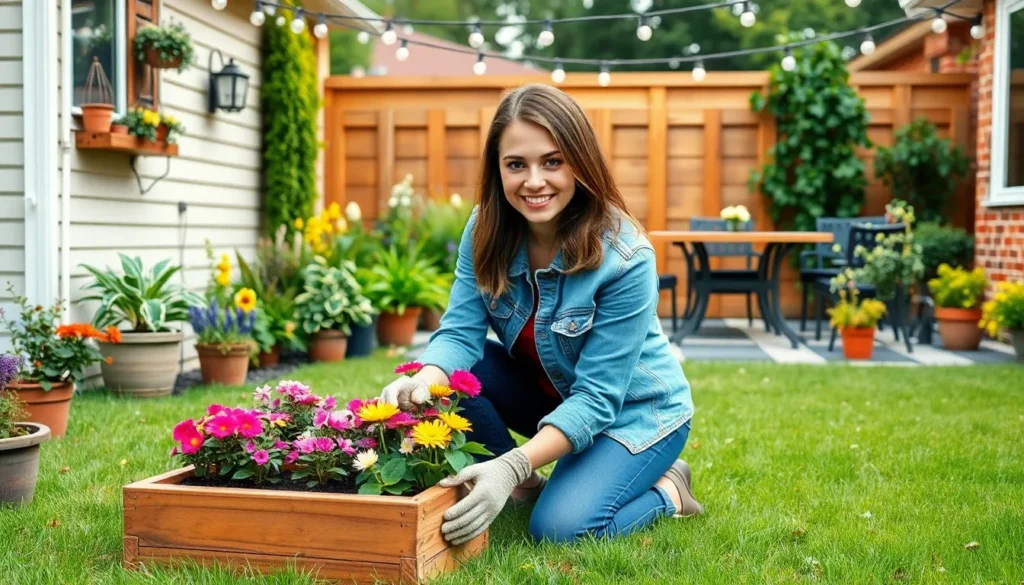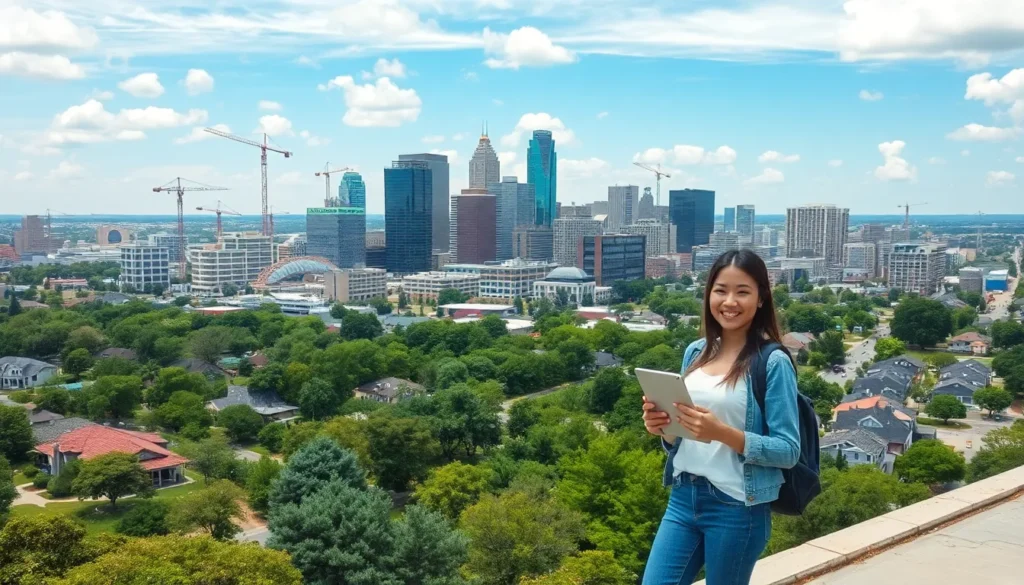Transforming a yard into a stunning landscape isn’t just for the pros with fancy degrees and a penchant for dirt under their nails. It’s for anyone who dreams of turning their outdoor space into a personal paradise. Whether it’s a cozy nook for morning coffee or a vibrant garden that makes the neighbors green with envy, landscaping projects can elevate any home’s curb appeal and mood.
Table of Contents
ToggleOverview of Landscaping Projects
Landscaping projects encompass a wide range of tasks aimed at enhancing outdoor spaces. Common activities include planting trees, installing flower beds, and adding decorative elements. Each project can significantly improve the aesthetic appeal of a property.
Customizing a landscape starts with evaluating specific goals. Whether a homeowner seeks tranquility or vibrant color, project intentions dictate design choices. Water features, such as fountains or ponds, add tranquility while creating visual interest. Paths and seating areas allow for functional use of gardens.
Budget also influences the scope of landscaping projects. Small-scale transformations may involve minimal expenses, while larger undertakings require significant investment. Homeowners may spend anywhere from $2,000 to over $20,000, depending on complexity and materials used.
Timing matters for successful landscaping. Spring and fall typically offer optimal conditions for planting. Local climate and soil type also impact project scheduling.
Choosing the right plants is crucial. Native species often require less maintenance and thrive better in local environments. Incorporating a variety of plants ensures year-round interest and resilience against pests.
Sustainability has become a key focus in landscaping. Many projects now incorporate eco-friendly practices, including xeriscaping, which reduces water usage. Composting and using organic fertilizers boost soil health while minimizing environmental impact.
Utilizing professional help can enhance project outcomes. Landscape designers bring expertise in aesthetics and functionality. Collaborating with experts facilitates meeting specific needs while also ensuring compliance with local regulations.
Landscaping projects, when thoughtfully planned and executed, transform outdoor spaces into beautiful, functional environments.
Types of Landscaping Projects

Landscaping projects can enhance both residential and commercial spaces, creating inviting environments. Understanding the two main types of landscaping helps clarify their specific needs and goals.
Residential Landscaping
Residential landscaping focuses on personal outdoor spaces. Homeowners often prioritize comfort and aesthetics, aiming to create areas for relaxation and gatherings. Projects may include planting trees, installing flower beds, or building patios. Effective design considers local climate conditions and plant selections to ensure sustainability. Native plants, for example, thrive in specific environments and require minimal maintenance. Budget ranges vary from $2,000 to $20,000, heavily influenced by design complexity and materials used. The overall goal is to develop a harmonious outdoor experience tailored to individual preferences.
Commercial Landscaping
Commercial landscaping emphasizes functionality and professionalism. Businesses strive to make a positive impression on clients, using landscaping to enhance curb appeal. Services range from maintaining green spaces to designing elaborate gardens in front of office buildings. Projects often involve installing pathways, lighting, and irrigation systems for durability and visual appeal. Selecting plants that are easy to maintain and suitable for the location supports sustainability goals. Budget considerations can escalate quickly, depending on the scale of the project. Ultimately, effective commercial landscaping can boost property values and create welcoming business environments.
Planning Your Landscaping Projects
Planning landscaping projects requires careful thought and organization. Important aspects include budgeting and selecting suitable plants. Both components contribute to successful outcomes.
Budgeting for Your Project
Budgeting plays a critical role in landscaping projects. Homeowners can expect costs to range from $2,000 to over $20,000 based on project complexity. Evaluating costs early ensures proper allocation of resources. Determining priorities helps in identifying essential features. Gathering quotes from multiple contractors provides insight into market rates. Contingency funds should also be considered for unexpected expenses. Always keep local regulations in mind, as they may influence project costs.
Choosing the Right Plants
Choosing the right plants enhances both beauty and functionality in gardens. Selecting native species often minimizes maintenance and promotes local biodiversity. Researching each plant’s light, water, and soil requirements ensures compatibility with existing conditions. Incorporating seasonal plants can provide continuous color throughout the year. Homeowners should also consider plants’ growth habits to avoid overcrowding. Grouping plants by their needs improves design efficiency and aesthetic appeal. Focusing on sustainable practices in plant selection supports eco-friendly landscaping efforts.
Common Landscaping Techniques
Landscaping projects utilize various techniques to create visually appealing and functional outdoor spaces. Two primary techniques include hardscaping and softscaping.
Hardscaping
Hardscaping encompasses non-plant elements in landscaping designs. This includes patios, walkways, retaining walls, and similar structures. Concrete, stone, and brick serve as popular materials for durability and aesthetic appeal. Proper installation enhances the usability of outdoor spaces, providing areas for relaxation and gatherings. Moreover, hardscaping can prevent soil erosion and manage drainage effectively, making it an essential aspect of landscaping projects.
Softscaping
Softscaping focuses on the living elements within a landscape. This technique involves the selection and arrangement of plants, trees, flowers, and shrubs. Native plants often thrive with lower maintenance while supporting local wildlife. Colorful flowers can add vibrancy throughout the seasons, enhancing visual interest. Grouping plants with similar water and light needs improves design efficiency and ensures a sustainable approach. Overall, softscaping plays a pivotal role in creating lush, inviting environments, balancing the hardscape structures.
Sustainable Landscaping Practices
Sustainable landscaping incorporates eco-friendly techniques that minimize environmental impact. Native plants play a critical role in this practice, requiring less water and supporting local wildlife. Xeriscaping, which focuses on reducing water usage, complements native plant selections by creating drought-resistant landscapes.
Incorporating organic fertilizers reduces chemical runoff and enhances soil health. Compacting soil structures with natural materials boosts nutrient retention and promotes plant growth. Rain gardens collect and filter stormwater, helping prevent runoff and erosion.
Mulching conserves soil moisture and suppresses weeds, promoting a healthier garden environment. Grouping plants with similar water and sunlight needs enhances both appearance and maintenance efficiency. Avoiding invasive species ensures a balanced ecosystem, which benefits local flora and fauna.
Strategic planning for hardscaping elements offers further environmental advantages. Permeable paving materials minimize stormwater runoff and support groundwater replenishment. Installing rain barrels captures rainwater for irrigation, reducing dependence on municipal water supplies.
Time of year influences sustainable practices as well. Spring and fall planting aligns with optimal growing conditions for many plants. Seasonal considerations help maintain landscape vigor and reduce resource demands.
Adopting these sustainable landscaping practices leads to a thriving outdoor space that reflects environmental responsibility. Homeowners who embrace these methods contribute to a healthier planet while enjoying an aesthetically pleasing outdoor environment.
Landscaping projects offer a unique opportunity to enhance outdoor spaces while reflecting personal style and environmental responsibility. By carefully planning and considering elements like plant selection and budget, homeowners can create inviting areas that serve both aesthetic and functional purposes. Sustainable practices not only benefit the environment but also lead to thriving landscapes that require less maintenance.
Engaging professional help can elevate these projects, ensuring that designs are both beautiful and compliant with local regulations. Whether focusing on residential comfort or commercial appeal, thoughtful landscaping transforms yards into harmonious environments that everyone can enjoy. Embracing creativity and sustainability in landscaping opens the door to endless possibilities for outdoor enjoyment.













